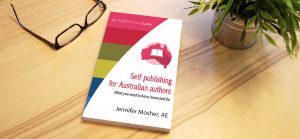Traditional vs Self vs Vanity publishing
In this new world of self publishing, it’s important to understand the differences between traditional, self and vanity publishing. But first we should start with a simple definition: What exactly is publishing?
The simple answer is: project management. The slightly more complex answer is: project management with a view to making a profit.
In the past, ‘traditional publishers’ would license a manuscript from an author. They would project manage turning that raw manuscript into a published book and as part of that process, they would also wear the cost and the risk.
In today’s world, there are less and less traditional publishers and it’s getting harder and harder to secure a publishing contract, leaving most people to self publish. Ergo… if you self publish, you’ll be managing the project and you’ll be wearing the financial risk!
So what is vanity publishing? This term was applied to most self publishing ventures until around 2010 when a separation began to take place in the public’s minds. With the advent of the Kindle, iPad and print on demand, the Ordinary Joe began to have access to great (and not-so-great!) books well outside the traditional publishing industry’s catalogue. As the public began to consume more and more self-published books, they also began to understand that just because something had been self published that didn’t mean it was crap. On the contrary, the public began to realise just how much they’d had withheld from them because so many stories and authors just didn’t fit the ideals of traditional publishers.
And as more and more self published books were consumed, the reading public also began to notice the differences in quality between those books which had been published with care by the author (having been edited, proofread, properly formatted or laid out, cover professionally designed), and those which hadn’t had the same level of care applied. Consequently, those books which get released without certain standards being applied by the author are referred to disparagingly as ‘vanity publications’.
To publish a book with some level of care is costly – hence the void traditional publishing houses played in the past. But in today’s world, less and less traditional publishers can afford to take the risks they used to, so if you can’t get a publishing contract, it doesn’t necessarily mean your book is crap, it just means the publishing house can’t see a way to make money out of it. And while I have seen people riled up about not getting a contract, they seem to forget that these publishing houses are in business, and if they don’t make money, they’ll soon be out of business!
But at least today you have affordable options as far as self publishing goes. You don’t need to print 2,000 copies and try to ship them to bookstores – you can use print on demand supply chains with retailing via the internet, worldwide. Or you can skip the print part and just release an ebook. Or add the print version later if you find the ebook making money for you.
And you don’t have to go it alone. With businesses like IndieMosh you can have people do as much or as little as you need help with.
So welcome to the 21st century and to what I hope will be your self publishing journey, and not a vanity publishing one! 😉
~ ~ ~

Jenny is the author of Self publishing for Australian authors: What you need to have, know and do, which can be purchased from your favourite online retailer via Jenny’s author page here: https://indiemosh.com.au/author-6/



Recent Comments